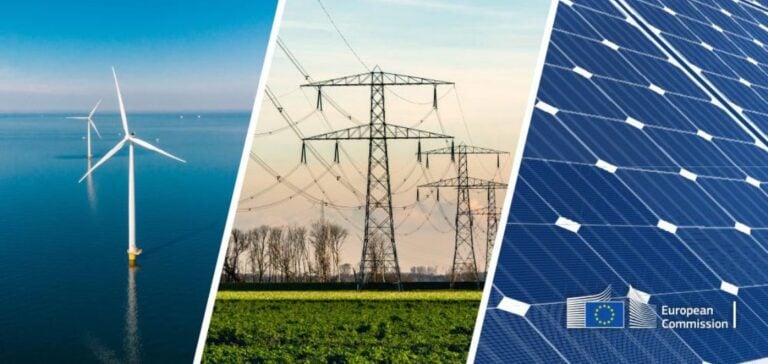The European Commission recently announced the inclusion of three new projects in the list of Cross-Border Renewable Energy Projects (CB RES list) under the Connecting Europe Facility for Energy (CEF Energy) program.
This initiative aims to promote regional energy cooperation and support the transition to clean energy on a European scale.
New Projects
The first project, PONTIS (Progressing On reNewable energy Transfer for International Supply in a connected Europe), aims to create an integrated, cross-border renewable hydrogen supply chain in Europe.
This project will facilitate the deployment of green energies and the development of a market for green hydrogen.
The second project, Bornholm Energy Island (BEI), involves the installation of two offshore wind farms and two interconnections linking the converter station in Denmark and Germany.
This hybrid infrastructure will enable surplus electricity to be traded and shared between these two nations.
Finally, the third project, TMNHSA (BG-RO) Project – Turnu Măgurele-Nikopol Hydraulic Structures Assembly, is a cross-border initiative between Romania and Bulgaria harnessing the hydroelectric potential of the Danube.
The project focuses on environmental sustainability and meets local and industrial energy needs.
Objectives and outlook
These projects aim to close the regional renewable electricity generation gap, strengthen a more integrated European energy market, increase Europe’s energy independence and reduce dependence on fossil fuels.
In addition to these new projects, the CB RES list also includes :
- ELWIND, a hybrid offshore wind farm between Estonia and Latvia.
- GOERLITZ-ZGORZELEC, a cross-border district heating network based on renewable energies between Germany and Poland.
- CICERONE, a renewable electricity production project in Italy, Spain and Germany, designed to convert, transport and use green hydrogen in the Netherlands and Germany.
- SLOWP, an offshore wind farm in the Gulf of Riga, in Estonian waters.
- ULP-RES WP, an onshore wind farm located between northern Latvia and southern Estonia.
Financing and Support
These projects receive financial support for studies and works under the CEF Energy program.
The list also offers them increased visibility, greater certainty for investors and substantial support from member states.
The ELWIND and CICERONE projects were the first to receive funding in 2023, recently followed by Goerlitz-Zgorzelec, ULP-RES and SLOWP in 2024.
The projects on the CB RES list play a crucial role in achieving the energy objectives of the European Green Deal and the REPowerEU program.
In accordance with CEF Energy rules, this list is subject to approval by the European Parliament and the Council for a period of two months, which may be extended for a further two months.
It will be officially published after this control period, and will come into force 20 days later.
Regulatory context
CB RES projects, defined by the CEF regulation, aim to promote cross-border cooperation between EU countries and beyond in the planning, development and profitable operation of renewable energy sources.
These initiatives facilitate the integration of renewable energies through energy storage or hydrogen production, thus contributing to the EU’s long-term decarbonization strategy.
The addition of these new projects marks an important step towards a more energy-integrated and sustainable Europe.






















